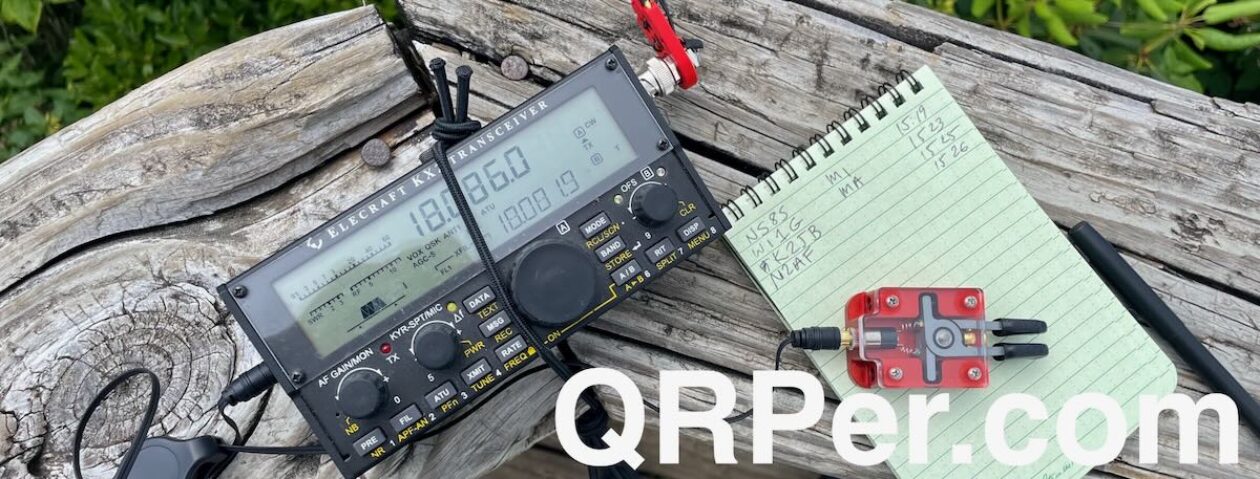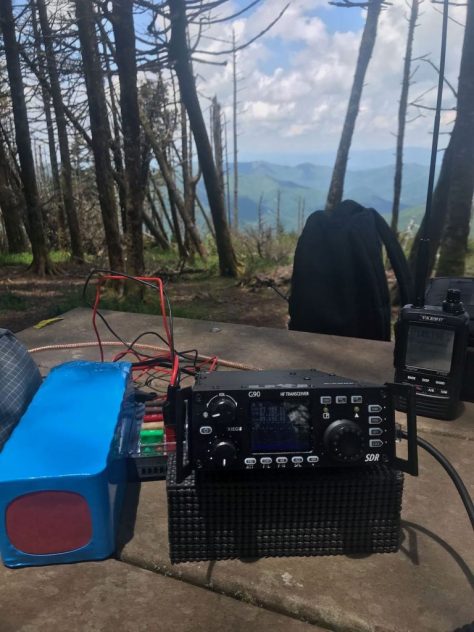My 100th POTA Activation at the Place It All Began
Mathematics is a finite science. So, for a while, I knew that my 100th POTA activation was coming. The only thing left was to decide how to organize and experience it. Initially, I considered activating a new reference (paradoxically, I still have quite a few left to do in Valle d’Aosta). However, with snow covering everything above 1500–1600 meters, I reconsidered my plan.
In the end, I asked myself—what’s the beauty of this program? It’s in the experiences it awards. From discovering forgotten places or ones you’ve never visited to the strong sense of community among participants—friends who, even on your 20th activation at the same park, are still happy to log you. So, I thought it was only natural that this activation would be from IT-0120, the Tsatelet Nature Reserve. It’s the closest to home, the place where I’ve learned the most about field operating, and also where it all began for me (back in November 2022).
I started early in the morning of Sunday 9th March 2025, following my wife’s advice (she knows me too well): “Have breakfast at McDonald’s”—because while she may not like their burgers, those croissants and coffee do make sense.

It was just after sunrise, but not too cold—3°C in the air suggested that once I reached the reserve, I wouldn’t be freezing. And so it was when I arrived at about 800 meters, on the promontory between Aosta and Saint-Christophe.
 I decided to take things slow and fully appreciate the memories that these two years of POTA have given me.
I decided to take things slow and fully appreciate the memories that these two years of POTA have given me.

I had my G90, a 15Ah battery (thankfully, the hike wasn’t endless, and my back thanked me), and a 40m half-wave end-fed antenna (by Ricky IU1PZC). I didn’t bring my vertical—I wanted nearby Italian operators to have a better chance of making contact.
I started on 7 MHz at 08:32 local time. The band was responsive, and by the time I switched to 20m, I already had over 30 QSOs in the log. 20 meters weren’t performing as usual, likely due to the K-index at 5, which signaled less-than-ideal propagation. It came in waves, though—not entirely bad. In one of these, I logged Don G0RQL. As strong as ever, he told me, “I wish I had logged you all 100 times, but I was there for quite a few of them”.
 He was right—if I had to guess, I’d say at least 30–40 times. Funny enough, I saw his QTH in Devonshire on vacation before I even joined the POTA family. The band continued its ups and downs, but I logged several park-to-park contacts, including an eclectic group from IT-0135 (I ended up logging three of them). Shoutout to Austrian colleagues OE3BIY, OE4JHW, and OE4ENU, who were even live on YouTube.
He was right—if I had to guess, I’d say at least 30–40 times. Funny enough, I saw his QTH in Devonshire on vacation before I even joined the POTA family. The band continued its ups and downs, but I logged several park-to-park contacts, including an eclectic group from IT-0135 (I ended up logging three of them). Shoutout to Austrian colleagues OE3BIY, OE4JHW, and OE4ENU, who were even live on YouTube.
I also took the time to enjoy the scenery and the moment—especially when a lively group of Scouts arrived. After all, this is their place, and I’m the guest. Tsatelet is known as Quota BP, named after Sir Baden-Powell, the founder of Scouting, who is honored with a plaque in the reserve.
Back on 40m, I managed a somewhat challenging QSO with Dario IZ3QFG (sadly, no luck with Andrea IW0HK today). But something special happened—I heard a female voice calling me, and I almost couldn’t believe my ears: Helga IN3FHE, had picked up the microphone again. She said, “I know you’re having fun, but this morning, have the most fun, okay?” Mission accomplished! You can’t hear hugs on the radio, but I swear today’s felt real.
Back on 20m, the conditions remained unpredictable, but the QSO flow continued. I logged several French stations (mainly from the north), two new YL hunters (one in Wales, the other in England), and a mobile operator in Richmond Park, London—we had a laugh about how it’s Mick Jagger’s neighborhood (another “Sir”…).
A couple of local IX1 stations called in—there aren’t many of us with this prefix, but we do exist, and sometimes there’s more than just two of us in HF at the same time! Looking at my log pages, I suspected this might be one of my most productive activations ever—but in that moment, the numbers didn’t matter. I kept going because the thrill was in communicating, answering, and finding other people out in the middle of nowhere with just a radio and an antenna, sometimes barely holding together.
 Spanish stations stood out—some of them are regulars in my log (EA2DT, EA5W, EA2CPG, EA6FM, and many others), and they always have a strong presence. Their enthusiasm is infectious, and they always deserve the “abrazo” and “suerte” that close every QSO with them. 15m wasn’t too promising, but on 10m, some stations from the South America contest came through. I called them, skeptical about my 15 watts, but I still logged two Brazilians, one Argentinian, and two Turkish stations. There it was—the DX!
Spanish stations stood out—some of them are regulars in my log (EA2DT, EA5W, EA2CPG, EA6FM, and many others), and they always have a strong presence. Their enthusiasm is infectious, and they always deserve the “abrazo” and “suerte” that close every QSO with them. 15m wasn’t too promising, but on 10m, some stations from the South America contest came through. I called them, skeptical about my 15 watts, but I still logged two Brazilians, one Argentinian, and two Turkish stations. There it was—the DX!
At 12:03 local time, after 3 hours and 31 minutes, I had relived practically all the highlights of my time as an operator. It was enough—but what a fantastic activation. I packed up, hiked down, and headed home.
Then came the logbook surprise:
- 136 QSOs
- 21 park-to-park contacts
- ODX: LT3E (Argentina) at 11,454 km—a new personal best from Tsatelet! (My previous record was 135 QSOs.)

 If someone had asked me how I wanted my 100th activation to be, my answer wouldn’t have been far from this.
If someone had asked me how I wanted my 100th activation to be, my answer wouldn’t have been far from this.

Now, onwards to the next 100! But not before saying thank you to everyone who makes this program so special.
Chris Diemoz
IX1CKN


























































